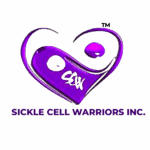 Hey everyone, catch a roundup of the latest sickle cell news all over the world. Here we go….
Hey everyone, catch a roundup of the latest sickle cell news all over the world. Here we go….
Has everyone heard about the Ereck Plancher case? Ereck was an athlete with sickle cell trait, who was pushed so hard during training by his coach, not given water breaks, and over exerted that he unfortunately died. The family is suing the university, coach and athletics’ commission for his untimely and unnecessary death. The University wanted to settle out of court for $5 million. As a result of his death (and hundreds of other deaths of athletes over the course of the last 35 years); the National Collegiate Association of American has ruled that all athletes must be tested for sickle cell trait. The NCAA rolled out its new regulations in training camps this year, and all new student athletes, transfers and incoming freshmen are now tested for sickle cell trait.
On June 29, the New York Times once again takes a look at sickle cell disease. There is a really great interview of Dr. George Buchanan, a professor of pediatrics at University of Texas Southwestern Medical Center at Dallas. He oversees about 650 patients with sickle cell and gave a general overview of the disease. He said something about Stem Cell Transplants that caught my attention:
I view sickle cell anemia as a potentially curable disease in a few patients who can receive a hematopoietic stem cell transplantation from an adequate match donor. There are a few hundred patients who have normal blood counts now who are leading a pretty normal life. But that’s such a small percentage of the one million people in the world who are estimated to have the disease. I don’t think it is reasonable for a vast majority of patients right now because of the cost — $200,000 to $400,000 — and lack of compatible donors.
Read the full interview and post your comments in the comment section. Hopefully the NYT will keep doing great pieces on sickle cell to increase national awareness.
World News:
In Nigeria, four medical centers have been set up by the Federal government. These centers are in the first of many, and will focus on education, testing and treatment of sickle cell disease. Read more about the centers HERE.
In Ghana, a preliminary study has reported that approximately 2% of newborns are born with sickle cell disease. Read on.
In India, the Federal Department of Health opened the first sickle cell center in Karnatak. 50% of the world sickle cell population resides in India. The disease is especially present in Gujarat, Madhya Pradesh, Maharashtra, Chattisgarh, Orissa, Tamilnadu, Kerala and Karnataka. Read on. Maharashtra gets alot of support from the government in combating sickle cell, and the Sickle Cell Society of India (SCSI) urges the government to do more. They are pushing that every newborn/pregnant woman be screened for SC.
In Antigua and Barbados, to celebrate World Sickle Cell Awareness Day, the head of the SC association stated that 3% of the population had sickle cell disease, 10% had the trait, and that more screening needs to be emphasized in the new year. The Antigua & Barbada Sickle Cell Association will commemorated World Sickle Cell Day with a march through the streets of St John’s beginning and ending at the Multipurpose Cultural centre. Read on.
Speaking for World Sickle Cell Awareness Day, this year marked the first year that Cuba joined in the celebrations. They had a symposium with nurses, doctors, industry leaders, patients and the general public all invited. Read on.
That is this week’s roundup. Catch you next time.
